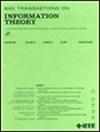d度反向乘法友好嵌入
IF 2.9
3区 计算机科学
Q3 COMPUTER SCIENCE, INFORMATION SYSTEMS
引用次数: 0
摘要
逆乘法友好嵌入在安全多方计算和零知识证明中发挥了重要作用。在这项工作中,我们将RMFEs的概念推广到d度RMFEs。通过推广构造传统2次RMFEs的代数几何思想,给出了d次RMFEs的一般构造。此外,我们的理论以统一的方式给出了一般伽罗瓦环,它包括$\mathbb {Z}_{p^{k}}$形式的环和$\mathbb {F}_{p^{k}}$这样的域,它们在以前的作品中已经分别处理过。我们提出了D度RMFEs的多个具体参数集(包括$D=2$),这对未来的工作很有用。在最近的工作(Cheon & Lee, Eurocrypt ' 22)中,正式引入了d度填充方法的概念,该方法捕获了将较小环的多个元素嵌入较大环的想法。我们证明了RMFEs到d度RMFEs的广义概念,尽管它比打包方法“更代数”,但在本质上是等价的。因此,我们的d度rmfe的构造也是d度包装方法。本文章由计算机程序翻译,如有差异,请以英文原文为准。
Degree-D Reverse Multiplication-Friendly Embeddings
Reverse multiplication-friendly embeddings have played a crucial role in secure multiparty computation and zero-knowledge proofs. In this work, we generalize the notion of RMFEs to degree-D RMFEs. We present a general construction of degree-D RMFEs by generalizing the ideas on algebraic geometry used to construct traditional degree-2 RMFEs. Furthermore, our theory is given in a unified manner for general Galois rings, which include both rings of the form $\mathbb {Z}_{p^{k}}$ and fields like $\mathbb {F}_{p^{k}}$ , which have been treated separately in prior works. We present multiple concrete sets of parameters for degree-D RMFEs (including $D=2$ ), which can be useful for future works. In the recent work of (Cheon & Lee, Eurocrypt’22), the concept of a degree-D packing method was formally introduced, which captures the idea of embedding multiple elements of a smaller ring into a larger ring. We show that the generalized notion of RMFEs to degree-D RMFEs which, in spite of being “more algebraic” than packing methods, turn out to be essentially equivalent. Thus, our constructions of degree-D RMFEs are also degree-D packing methods.
求助全文
通过发布文献求助,成功后即可免费获取论文全文。
去求助
来源期刊

IEEE Transactions on Information Theory
工程技术-工程:电子与电气
CiteScore
5.70
自引率
20.00%
发文量
514
审稿时长
12 months
期刊介绍:
The IEEE Transactions on Information Theory is a journal that publishes theoretical and experimental papers concerned with the transmission, processing, and utilization of information. The boundaries of acceptable subject matter are intentionally not sharply delimited. Rather, it is hoped that as the focus of research activity changes, a flexible policy will permit this Transactions to follow suit. Current appropriate topics are best reflected by recent Tables of Contents; they are summarized in the titles of editorial areas that appear on the inside front cover.
 求助内容:
求助内容: 应助结果提醒方式:
应助结果提醒方式:


